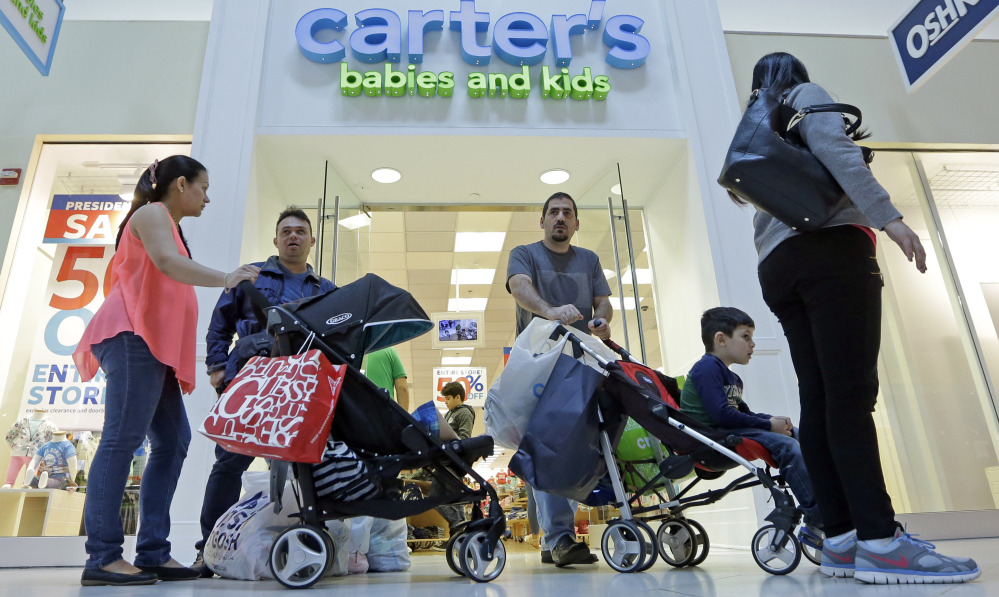Consumers may be a little shaken by the stock market, but America’s retailers wouldn’t know it.
Retail sales got off to a decent start this year, climbing 0.2 percent in January, the Commerce Department reported Friday, to match the previous month’s advance that was initially reported as a decline. And while the plunge in equity values helped send the University of Michigan’s preliminary sentiment index to a four-month low in February, households remained upbeat about their finances because they expect inflation to remain muted.
The fact that households are spending through the market volatility bodes well for first-quarter growth, which is riding heavily on consumption as softness abroad and a strengthening dollar weigh on other parts of the economy. Friday’s figures may also provide some reassurance for Federal Reserve Chair Janet Yellen and other policymakers following criticism that the central bank’s decision to raise its benchmark interest rate last month was premature.
“It confirms the view that they gave us with Yellen’s testimony earlier this week, which is that global volatility does tighten financial conditions, it does present some downside risks for the economy, but they’re only risks,” said Tom Simons, a money-market economist at Jefferies LLC in New York. “They aren’t producing negative outcomes yet, so the best strategy right here is patience and evaluating how things develop.”
In semiannual testimony to Congress on Thursday, Yellen said the central bank was assessing the impact on the economy from the swings in financial markets. The yearlong decline in global equities that started with a selloff in energy became a full-blown bear market Thursday, as losses in the broadest worldwide gauge extended past 20 percent.
Still, Yellen doubted the volatility would prompt the Fed to roll back its December rate hike. Officials have said future increases will depend on economic data.
Though the University of Michigan report’s gauge of current conditions fell to the lowest since November, the share of households reporting that their financial situation had improved rose to a six-month high of 45 percent.
A steadily improving labor market, higher incomes and low inflation are underpinning consumers’ ability to spend. The report showed Americans expected the inflation rate over the next five to 10 years to be 2.4 percent, down from 2.7 percent in January and the lowest in records to 1979, when the survey began asking about price expectations.
The retail sales figures used to calculate gross domestic product, which exclude categories such as food services, auto dealers, home-improvement stores and service stations, increased 0.6 percent last month, the most since May.
The gain prompted economists to give upbeat assessments for first-quarter consumption. Morgan Stanley now sees personal expenditures climbing at a 2.9 percent annualized rate, up from a 2.4 percent pace before the report. Michael Feroli, chief U.S. economist at JPMorgan Chase, sees spending tracking at a 3.1 percent rate. Consumption climbed at a 2.2 percent pace in the fourth quarter, Commerce Department data show.
Send questions/comments to the editors.



Success. Please wait for the page to reload. If the page does not reload within 5 seconds, please refresh the page.
Enter your email and password to access comments.
Hi, to comment on stories you must . This profile is in addition to your subscription and website login.
Already have a commenting profile? .
Invalid username/password.
Please check your email to confirm and complete your registration.
Only subscribers are eligible to post comments. Please subscribe or login first for digital access. Here’s why.
Use the form below to reset your password. When you've submitted your account email, we will send an email with a reset code.